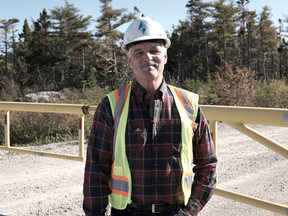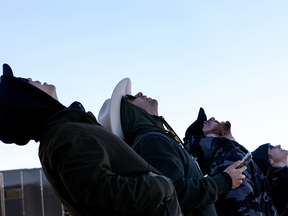Tom Sanders - Metro
A young woman who survived the 2016 terror attack in Brussels airport has died after choosing to be euthanised due to suffering extreme depression and PTSD following the incident.

A young woman who survived 2016 Brussels airport ISIS bomb but could not live with the trauma has been ‘euthanised’ in Belgium (Picture: Twitter / Youtube / Wikipedia )©
Six years ago, Shanti De Corte, 23, was walking through the departures lounge at the Belgian airport with some classmates ahead of a school trip to Italy when Islamic State militants detonated a bomb that killed 32 and injured 300.
Despite escaping the blast and leaving the scene physically unharmed, the psychological effects of the attack sent her spiralling into a deep depression and left her suffering from intense panic attacks from which she never managed to recover from.
Shanti later attended a psychiatric hospital in her hometown of Antwerp and took a range of antidepressant medications, but was unable to make a full recovery and attempted suicide on two seperate occasions in 2018 and 2020.
Earlier this year, the young woman chose to be euthanised- a procedure which is legal in Belgium- and passed away on May 7, after her request was approved by two psychiatrists.
Speaking to Belgian outlet VRT this week, Shanti’s mother Marielle shared her daughter’s pain and described the heartbreaking ordeal which left her unable to function.
‘That day really cracked her,’ her mother said. ‘She never felt safe after that.

Shanti survived the blast with no physical wounds but
suffered severe mental trauma and PTSD as a result of the incident
(Picture: Twitter)

The airport attack killed 32 people and injured over 300 more. Shanti, then just 17 years old, was about to embark on a school trip to Rome at the time of the blast

The airport attack killed 32 people and injured over 300 more. Shanti, then just 17 years old, was about to embark on a school trip to Rome at the time of the blast
(Picture: YouTube)
‘In the summer of 2016 we went on a trip to France, but Shanti didn’t come out of the hotel. She didn’t want to go anywhere where other people were, out of fear. She also had frequent panic attacks and she never got rid of it.’
Elsewhere in the interview, Marielle said her daughter ‘always hoped for a livable life’, but it was a battle she just could not win.
‘She was so limited by her fear that she couldn’t do what she wanted to do. She lived in constant fear and completely lost her sense of security. When Shanti came out, she was always alert. Am I in no danger? Could something happen? She never rested outside.’
Shanti herself was candid about the mental toll the attack had taken on her psyche, and frequently shared updates on social media about her deteriorating condition.
In one post she wrote: ‘I get a few medications for breakfast. And up to 11 antidepressants a day. I couldn’t live without it.
‘With all the medications I take, I feel like a ghost that can’t feel anything anymore. Maybe there were other solutions than medications.’
According to Shanti’s school psychologist, the young woman had suffered from depression prior to the attack, the Mail reports.
‘There are some students who react worse than others to traumatic events. And having interviewed her twice, I can tell you that Shanti De Corte was one of those fragile students.’
As she recovered in hospital following an attempt to kill herself, Shanti seriously discussed the possibility of ending her own life, after which she reached out to an organisation that defends the right to ‘death in dignity’.
She later requested the organisation assist her in her euthanasia attempt on grounds of ‘unbearable psychiatric suffering’

Shanti De Corte- Seen here posing with friends- struggled to recover from the trauma of the ordeal and eventually reached out to a euthanasia organisation to ease her suffering (Picture: Twitter)

After making peace with her situation, Shanti posted a touching goodbye on social media before she died surrounded by friends and family in May 2022 (Picture: FaceBook)
‘In the summer of 2016 we went on a trip to France, but Shanti didn’t come out of the hotel. She didn’t want to go anywhere where other people were, out of fear. She also had frequent panic attacks and she never got rid of it.’
Elsewhere in the interview, Marielle said her daughter ‘always hoped for a livable life’, but it was a battle she just could not win.
‘She was so limited by her fear that she couldn’t do what she wanted to do. She lived in constant fear and completely lost her sense of security. When Shanti came out, she was always alert. Am I in no danger? Could something happen? She never rested outside.’
Shanti herself was candid about the mental toll the attack had taken on her psyche, and frequently shared updates on social media about her deteriorating condition.
In one post she wrote: ‘I get a few medications for breakfast. And up to 11 antidepressants a day. I couldn’t live without it.
‘With all the medications I take, I feel like a ghost that can’t feel anything anymore. Maybe there were other solutions than medications.’
According to Shanti’s school psychologist, the young woman had suffered from depression prior to the attack, the Mail reports.
‘There are some students who react worse than others to traumatic events. And having interviewed her twice, I can tell you that Shanti De Corte was one of those fragile students.’
As she recovered in hospital following an attempt to kill herself, Shanti seriously discussed the possibility of ending her own life, after which she reached out to an organisation that defends the right to ‘death in dignity’.
She later requested the organisation assist her in her euthanasia attempt on grounds of ‘unbearable psychiatric suffering’

Shanti De Corte- Seen here posing with friends- struggled to recover from the trauma of the ordeal and eventually reached out to a euthanasia organisation to ease her suffering (Picture: Twitter)

After making peace with her situation, Shanti posted a touching goodbye on social media before she died surrounded by friends and family in May 2022 (Picture: FaceBook)
Euthanasia, defined as the practice of intentionally ending a person’s life to relieve pain and suffering, is legal in Belgium for an individual who is in ‘a medically futile condition of constant and unbearable physical or mental suffering that cannot be alleviated, resulting from a serious and incurable disorder caused by illness or accident’.
Her request was formally approved by two psychiatrists earlier this year, and Shanti was eventually euthanised surrounded by her friends and family on May 7, 2022.
In the end, Shanti was able to make the journey to Rome that was taken from her in 2016, travelling there with her family last year as a kind of final request.
‘Shanti still wanted to see Rome with us. That was really important to her. She enjoyed it very much herself, but it was also very intensive for her,’ her mother said.
‘We are grateful for the extra time we got. Despite her struggle, we were able to do a lot together and we were able to say goodbye.’
In one touching final gesture, Shanti made one final post on social media the day she was euthanised. Taking to social media, she wrote: ‘I was laughing and crying. Until the last day. I loved and was allowed to feel what true love is.
‘Now I will go away in peace. Know that I miss you already.’









.jpg)












